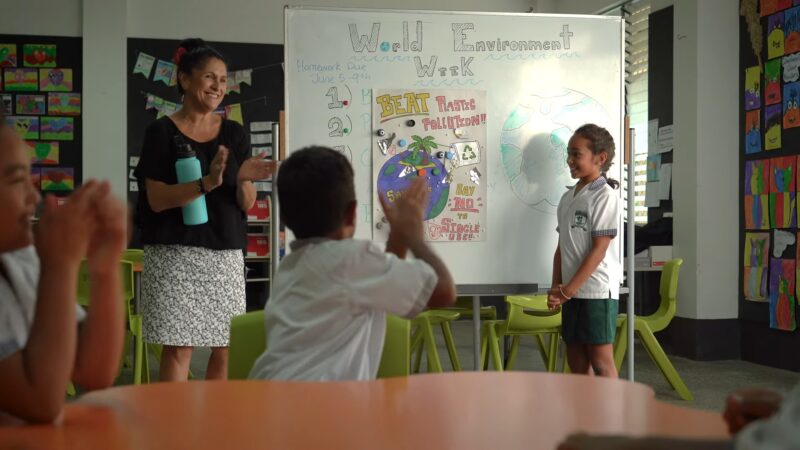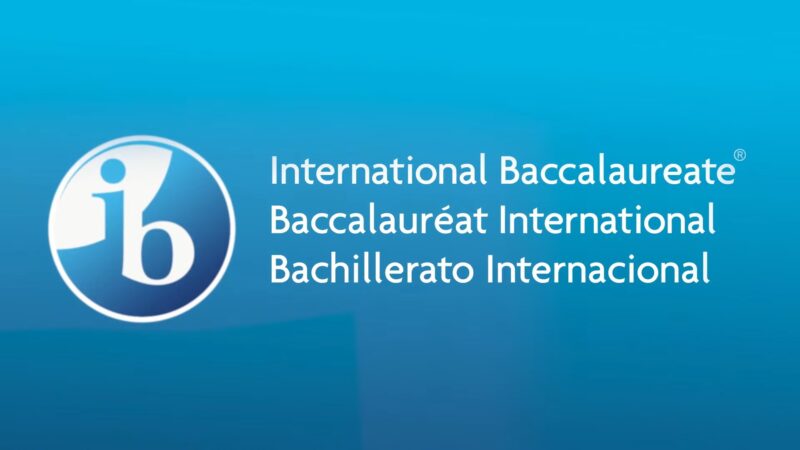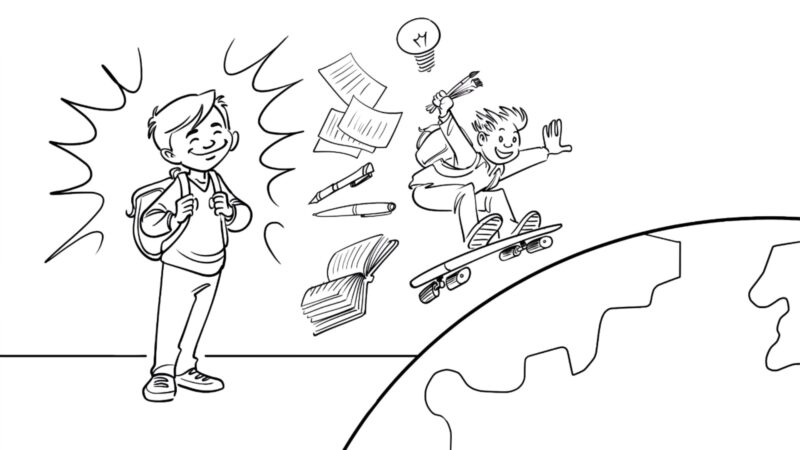Education is not just about acquiring knowledge and skills, but also about developing the whole person. This is the idea behind holistic education, a comprehensive approach to teaching and learning that seeks to address the emotional, social, ethical, and academic needs of students in an integrated learning format.
Unlike more narrowly focused methods such as critical pedagogy, holistic education strives to develop well-rounded and confident adults who make meaningful contributions to their community and the world. But what precisely defines holistic education, and how does it stand apart from other educational approaches?
What are the benefits and limitations of this approach, and how can it be implemented in the classroom? In this blog post, we will explore these questions and more, and provide some examples of holistic education in practice.
The Definition
Holistic education is a relatively new movement that emerged in the 1980s as a response to the perceived mechanistic and standardized nature of the existing education system. However, the concept of educating the whole person has roots in ancient philosophies and traditions, such as those of the Greeks and the indigenous cultures.
Some of the influential thinkers and educators who have contributed to the development of holistic education include Maria Montessori, Rudolf Steiner, John Dewey, Jean Piaget, and Paulo Freire. According to Marshman (2010), holistic education can be defined as:
Holistic education focuses on the fullest possible development of the person, encouraging individuals to become the very best or finest that they can be and enabling them to experience all they can from life and reach their goals.
These are some of the key features of holistic education.
Educating the Whole Student
Holistic education extends beyond mere academic growth, embracing the emotional, physical, and social spheres of student development. It appreciates the individuality of each learner, acknowledging their distinct talents, passions, and requirements.
This approach also cultivates the Cambridge learner qualities, namely being confident, responsible, reflective, innovative, and engaged.
Students as Part of The Whole

This educational philosophy recognizes students’ connections to both their immediate and broader communities, as well as their relationship with the natural world. It instills in them respect and care for others, coupled with an awareness of their actions’ global impact.
Moreover, it encourages embracing diverse viewpoints and experiences, fostering an appreciation for cultural diversity and intercultural comprehension.
Caring Classroom Culture
Holistic education establishes a nurturing and supportive educational atmosphere where students feel secure, appreciated, and inspired. It promotes a sense of community and teamwork among students and educators, creating an environment of trust and respect.
Additionally, it offers comprehensive support for students, including counseling, mentorship, health, and nutrition services, catering to both their academic and personal needs.
Experiential Learning
This educational model prioritizes active, experiential learning over rote memorization. It engages students in projects and activities that challenge them to apply their knowledge and skills in real-life scenarios.
It also encourages learners to contemplate their learning journey and outcomes, seeking continual feedback and enhancement. Furthermore, it exposes them to diverse educational tools and resources, including technology, media, arts, and literature.
Benefits and Challenges
Holistic education offers a comprehensive approach that benefits students, educators, and the broader society by fostering a more inclusive and effective learning environment. For students, it provides a well-rounded educational experience that nurtures not only academic skills but also emotional, social, and creative development.
For educators and society, it encourages a more empathetic and connected approach to teaching, leading to a more informed, responsible, and compassionate community.
Benefits
This approach significantly boosts students’ academic performance and success by catering to their unique needs and interests, offering a rich and engaging educational experience. It equips students with vital life skills and abilities like critical thinking, creativity, communication, collaboration, and self-management, crucial for their personal and professional triumphs in today’s world.
Holistic education also promotes students’ personal development and well-being, enhancing their self-esteem, confidence, resilience, and happiness. It aids them in managing stress, emotions, and life’s hurdles, fostering a positive life perspective.
Additionally, it develops students’ social and civic consciousness, instilling empathy, compassion, and a sense of justice. It prepares them to be proactive, informed citizens, contributing positively to global welfare and sustainable development.
Challenges

Implementing this approach requires a significant shift in the educational paradigm and culture, potentially facing resistance from stakeholders like policymakers, administrators, teachers, parents, and students accustomed to traditional, standardized education methods. It demands a high commitment and professionalism from educators, who must embrace new roles and mindsets, and acquire fresh skills and knowledge for effective holistic education implementation.
This approach also necessitates greater autonomy and flexibility in curriculum design and teaching, which might clash with current regulations and assessments. Holistic education involves considerable complexity and diversity, as it must address the varied needs, interests, and abilities of each student, and adapt to the diverse contexts and cultures of different communities.
It also strives to balance and integrate multiple learning dimensions in a meaningful, coherent manner. Evaluating holistic education poses its challenges, as it must assess not just academic results but also non-academic outcomes like affective, social, and ethical aspects.
This requires diverse assessment methods and tools, such as portfolios, rubrics, and self-assessments, which might not align with existing standards and expectations.
Implementation in the Classroom
Holistic education represents a dynamic and adaptable approach, not confined to a rigid model, but rather tailored to suit the unique goals, resources, and contexts of each school and educator. Implementing this approach begins with establishing a clear vision and purpose for holistic education, aligning curriculum, teaching methods, and assessments to these goals, and effectively communicating them to all involved parties including school leaders, colleagues, parents, and students.
Getting to know your students and their individual needs is crucial, necessitating continuous assessment through various methods like tests, surveys, and observations, to tailor instruction and support accordingly. Creating a nurturing and supportive learning environment is key, where a culture of respect and care allows students to feel safe and valued.
Setting high expectations, aiding students in goal-setting and progress tracking, and promoting collaboration enhances the sense of community. Providing comprehensive support, including counseling and health services, addresses both the academic and personal needs of students.
Engaging students in experiential and real-world learning is also vital. This involves designing activities that are relevant and challenging, encouraging the application of knowledge in practical situations.
Incorporating diverse learning methods and resources, such as technology and arts, enriches instruction. Encouraging reflection and seeking feedback on the learning process is also an integral part of this holistic approach.
Examples in Practice
Numerous schools and programs worldwide have embraced and integrated holistic education in diverse ways and settings. Among these are:
IB

The International Baccalaureate (IB), a renowned global education program, offers four distinct curricula for students aged 3 to 19: the Primary Years Programme (PYP), the Middle Years Programme (MYP), the Diploma Programme (DP), and the Career-related Programme (CP). The IB focuses on nurturing students to become inquirers, knowledgeable, thinkers, communicators, principled, open-minded, caring, risk-takers, balanced, and reflective.
Its curriculum is characterized by an inquiry-based, interdisciplinary, and international approach, blending academic, personal, and social learning. Additionally, the IB emphasizes service learning, creativity, activity, and reflection, culminating in a significant project or essay.
Waldorf Education
Waldorf Education, initiated by Rudolf Steiner and Emil Molt in 1919, is rooted in anthroposophy principles. This approach aims to holistically educate the “head, heart, and hands” of children, enhancing their intellectual, artistic, and practical abilities.
The Waldorf curriculum is comprehensive, developmental, and experiential, encompassing a broad spectrum of subjects including languages, mathematics, sciences, humanities, arts, and crafts. It also places a strong emphasis on imagination, creativity, spirituality, and a connection to nature and culture.
Montessori
Montessori Education, developed by Maria Montessori in the early 20th century, is grounded in scientific observation and child development principles. It strives to support children’s natural development, fostering their independence, curiosity, and love of learning.
The Montessori curriculum is tailored, self-directed, and hands-on, covering practical life, sensorial, language, mathematics, and cultural areas. This approach also features a prepared environment where children can explore and learn at their own pace and interest, under the guidance of trained educators.
FAQ
Can it be integrated into standard curriculums?
Yes, holistic education can be integrated into standard curriculums. It involves incorporating teaching methods that address various aspects of student development, such as collaborative projects, experiential learning, and activities that foster emotional and social skills, within the existing academic framework.
How does holistic education differ from traditional education models?
Holistic education differs from traditional models by focusing on the development of the whole person, not just academic skills. It integrates emotional, social, and ethical learning with academic studies, emphasizing personal growth, creativity, and social responsibility alongside intellectual development.
Is it suitable for all age groups?
Holistic education is adaptable and can be tailored to suit all age groups. From early childhood to high school, the approach can be modified to meet the developmental needs and learning styles of different age groups, ensuring a comprehensive educational experience at every stage.
How do holistic education approaches impact student well-being?
Holistic education positively impacts student well-being by nurturing their emotional and social development. This approach helps students build self-esteem, resilience, and social skills, leading to improved mental health and better coping strategies for life’s challenges.
What role do teachers play in a holistic education environment?
In a holistic education environment, teachers act as facilitators and guides. They support the overall development of students by creating a nurturing learning environment, providing resources for experiential learning, and encouraging self-reflection and critical thinking.
Can it improve academic performance?
Yes, holistic education can improve academic performance. By addressing the diverse needs and learning styles of students, it fosters a deeper understanding and engagement with academic content. This comprehensive approach can lead to improved focus, motivation, and ultimately, better academic outcomes.
Final Words
Holistic education is a dynamic approach that nurtures the emotional, social, ethical, and academic aspects of students, aiming to develop well-rounded, confident individuals who positively impact their communities and the world. It offers numerous benefits, including enhanced academic performance, life skills development, personal growth, and social responsibility.
However, it also presents challenges such as the need for systemic change, high teacher commitment, and complex implementation. This adaptable framework, exemplified by programs like the International Baccalaureate, Waldorf, and Montessori, shows the diverse potential of holistic education in preparing students for future challenges and opportunities.
